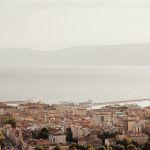How will Croatia deal with an expected wave of illegal immigration?
“Croatia has enough facilities from Ilok to Dubrovnik that can accommodate immigrants if it is needed. There should be no problems as far as the accommodation of refugees is concerned. State Office for Property Management has a list of fifteen potential facilities which can be quickly put into operation if it is required”, said Mladen Pejnović, director of the Office, reports Jutarnji List on August 21, 2015.
The majority of facilities are former army barracks which are no longer used, coastal resorts with unresolved ownership issues, as well as facilities which Croatia received according to the agreements on succession of the former Yugoslavia.
In short, the government has an unofficial strategy how to care for immigrants and has begun preparations in the event that, after Hungary builds a border wall with Serbia, Croatia becomes an alternative route for the entry of refugees into the Schengen Area. The government believes that facilities with at least five thousand square metres are suitable for adequate housing and has therefore selected former military barracks as a preferred solution.
The list of possible locations includes barracks “Colonel Milivoj Halar” in Dugo Selo, and some of the numerous barracks in Karlovac, Varaždin and Pula, which are no longer under the Ministry of Defence. Among the potential locations mentioned are Esterhazy Palace in Darda and Youth Centre in Vukovar, which has already been “tested” in practice – two years ago it served as a temporary shelter when extensive floods ravaged Croatia. These facilities would be easy to bring into operation for the first wave of refugees.
Experts estimate that the most important element is solid infrastructure so that refugees have a “roof over their heads”. The 747 refugees from Syria and Eritrea, who have come to Italy and Greece and whom Croatia will accommodate according to a decision by the European Commission, will go to the existing facilities at the Centres for Asylum Seekers in Kutina and Zagreb.
It is not certain that Croatia will become a temporary home for refugees, and where and when it will happen, due to the fact that the smuggling routes are constantly changing. Croatia, with more than 1300 kilometres long border with Montenegro, Bosnia and Herzegovina and Serbia, has the longest external land border in the EU, while the borders with Slovenia and Hungary are the internal borders of the EU.
Croatia is one of the countries for which experts estimate that the refugees could be interested in only as a transit country. They believe that the ultimate goal of refugees is to reach one of the more developed EU member states.







